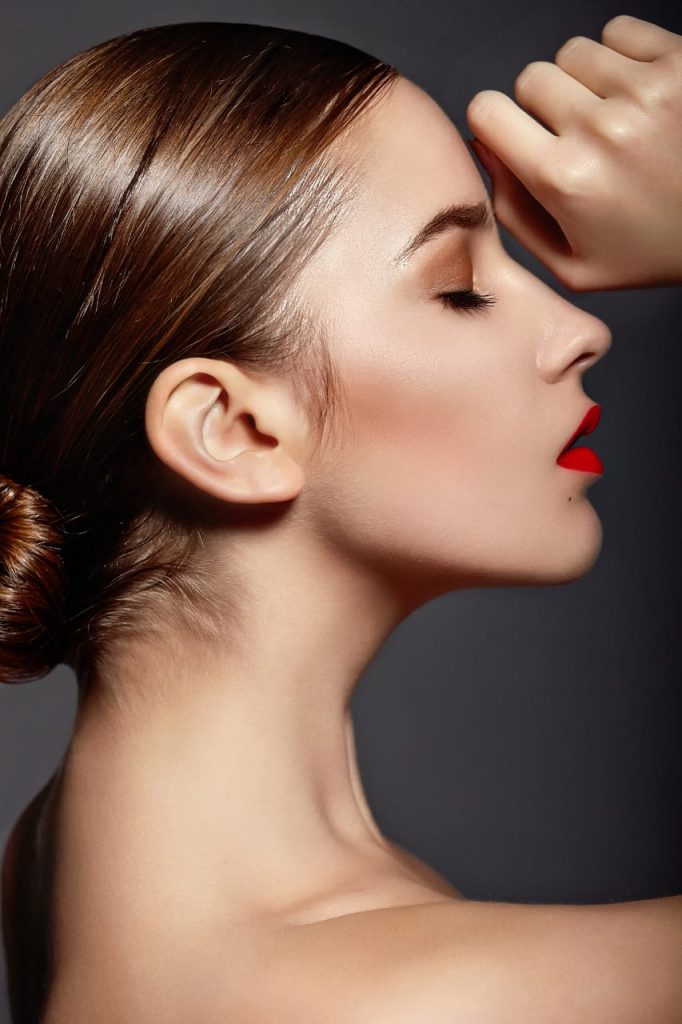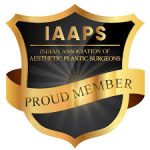Rhinoplasty does wonders to enhance the self-image; but patients must have realistic goals. It is important to have a clear idea about what you want and be able to communicate this effectively to your plastic surgeon. In addition, it is important that you understand from your consultation what is surgically achievable and what is not. More than one session may be necessary to understand everything. Simulation software can be used to show what the nose might look like after the operation. At times, it may be necessary to carry out a small procedure on your chin [either to enhance or reduce chin projection] to improve the balance of the facial features, this can also be seen on simulation.
Nose Correction
________Dr. Mohan Rangaswamy________

Achieve Balance and Harmony with Rhinoplasty
Cosmetic surgery of the nose also called “rhinoplasty” can improve the shape, size and general appearance of the nose. The main aim is to address those areas which are of concern to the patient as well as to try and balance the features of the nose such that it is in harmony with the rest of the face. It is a very popular surgery with high satisfaction rates.
Age of Surgery: Rhinoplasty is not generally performed before the age of 14, because full nasal development has not occurred. If the nose continues to change due to growth the outcome becomes less predictable. One can also follow the rule of waiting 2 years after the start of periods in a girl or 3 years after voice change in a boy to consider doing a rhinoplasty if it is really required. However, in the case of a grossly deformed nose which is socially unacceptable to the patient, we may operate and correct it earlier. There is no upper age limit to undergo Rhinoplasty as long as the person is healthy.
Who is a candidate? You may be a good candidate for Rhinoplasty if any of the following applies to you
- Previous trauma to the nose resulting in deformity
- Nose appearing too large for the face
- A crooked or off-centre nose
- Excessively flared nostrils
- A “bump” on the bridge of the nose when viewed from the side
- A nasal tip which is too thick or wide – box shaped tip
7. A nasal tip which droops down especially when smiling
8. Depressed nasal bridge or saddle nose
9. Ethnic nose which you may want to change
10. Large nose-Small chin combination
11. After previous Rhinoplasty if there are still problems to sort out [secondary surgery].
Understanding Rhinoplasty and Setting Realistic Goals
The Consultation Process
Surgical Techniques in Rhinoplasty
Reshaping The Nose Structure
Post-Surgery Recovery & Care
Possible Risks and Complications
Why Rhinoplasty Sometimes Goes Wrong
Secondary Rhinoplasty (Revision Surgery)
Understanding Rhinoplasty and Setting Realistic Goals
The Consultation Process
The consultation comprises of a full medical history with special emphasis on any previous surgeries carried out on the nose [including ENT operations], difficulty in breathing through the nose and any allergies. A painless internal examination of the nose is carried out, and facial features are studied.
Surgical Techniques in Rhinoplasty
Surgery may be done under local anesthesia with sedation or general anesthetic. Rhinoplasty is probably the only major cosmetic surgery where the cuts are truly invisible. In most cases, the cuts are made totally inside the nose where they are invisible. Sometimes we use an “open rhinoplasty” wherein the incisions are made along the inside rim of the nostril and also across the columella (the vertical strip of tissue that separates the nostrils). This technique is generally used for difficult tip surgery or in patients who have had a number of operations before. The small external part of the cut is hardly visible after some time.
In some cases the flare of the nostrils has to be reduced; for this a small wedge of tissue is removed from the base of the nostrils, to narrow them. This cut is also well hidden in the natural crease where the nostril joins the cheek.
Reshaping The Nose Structure
Through the incisions mentioned, work is done on the bone and cartilage which form the framework of your nose. It is sometimes necessary to remove some bone or add some cartilage to alter the framework so that when the skin is re-draped over it, the desired result is achieved. In secondary surgery one may have to take cartilage from the ear or ribs to achieve the desired correction on the nose.
Post-Surgery Recovery & Care
You may be able to go home a few hours following the procedure but generally most patients stay overnight. There is usually an external splint on the bridge of the nose to protect you while you sleep and shield it from accidental bumps; this is removed after a week. Packing inside the nostrils is rarely used nowadays.
For the first three days after surgery, you should restrict your activities and sleep with your head elevated. This should prevent minor bleeding and help to reduce swelling. Bruising around the eyelids is common when surgery to change the shape of the bones has been carried out, but this usually resolves in 10 days. Your first return visit will be at one week when the splint is removed, the inside inspected and cleaned. You may be able to return to work the following day. Most normal activities can be resumed within three weeks.
Possible Risks and Complications
Fortunately, significant complications with this surgery are rare. Many thousands of people every year undergo rhinoplasty with pleasing results. Some of the potential complications which will be discussed with you in more detail at the time of the consultation include bleeding, infection and reactions to anesthesia. Numbness of the skin which may occur after rhinoplasty is usually temporary.
The nose is a dynamic structure and subtle changes will occur postoperatively while the swelling is reducing. This can go on for six months up to a year.
Why Rhinoplasty Sometimes Goes Wrong
We see many photos of people where the end result is not good looking. Unfortunately this is true but it does not have to be so. Rhinoplasty is an operation that requires great skills, finesse, judgement and temperament on the part of the surgeon. So choosing the right surgeon is more important in this operation than in many less demanding procedures.
Often the bad results are due to bad planning; too rough a technique or doing too much where less would have been better. There is no need to go through a mandatory list of steps in every rhinoplasty. Many still use out-dated methods. In modern rhinoplasty, the emphasis is on the customized gentle approach – it does not matter if the closed or open method is used. ‘Do whatever is necessary but only what is necessary’ is the guiding principle. A small percentage of patients may still need revisions to address minor issues but fortunately with better techniques, the disasters can be avoided.
Secondary Rhinoplasty (Revision Surgery)
Rhinoplasty may have to be repeated to correct some issues that did not turn out properly in the first operation. It may also be needed to correct problems after previous surgery or even to salvage cases gone wrong somehow. This is a difficult surgery and requires careful planning. Dr. Mohan Rangaswamy has been carrying out revision surgery successfully. It is best to wait for 1 year after one surgery before undergoing revision. It is an area for only the expert surgeon to handle.

